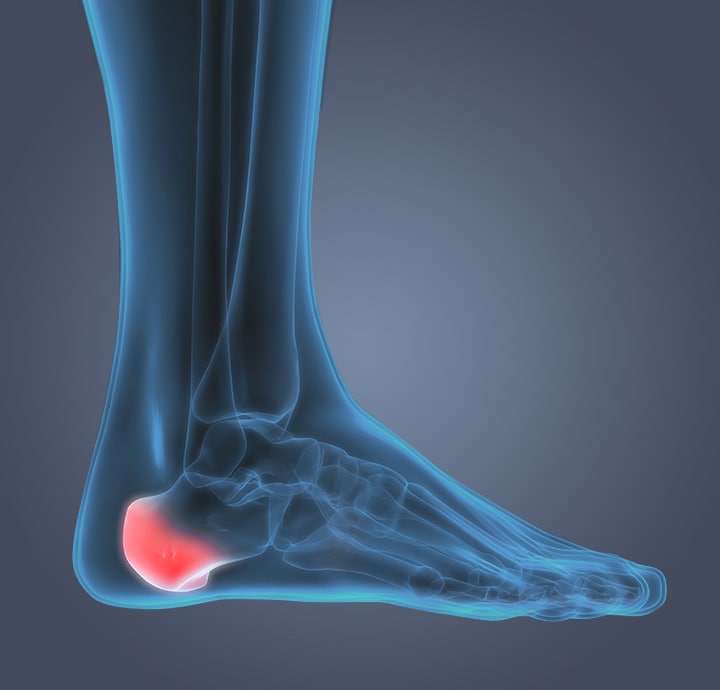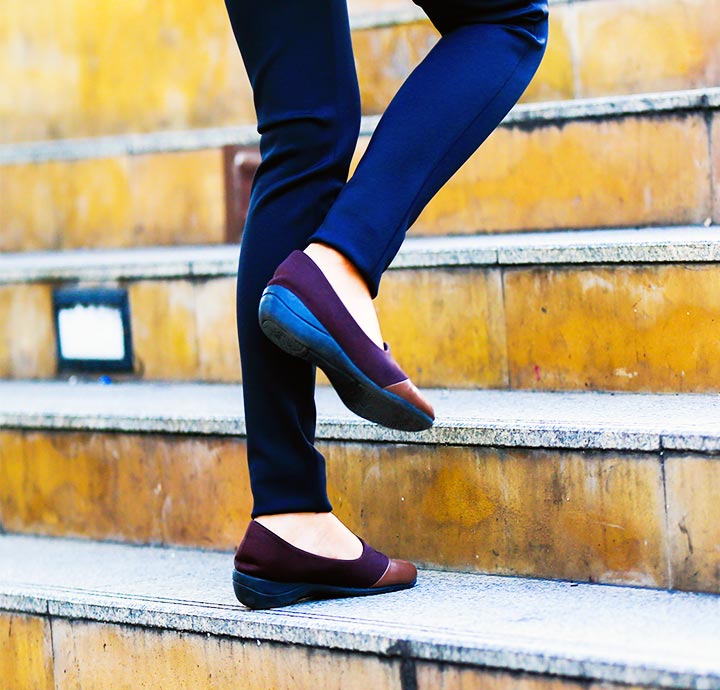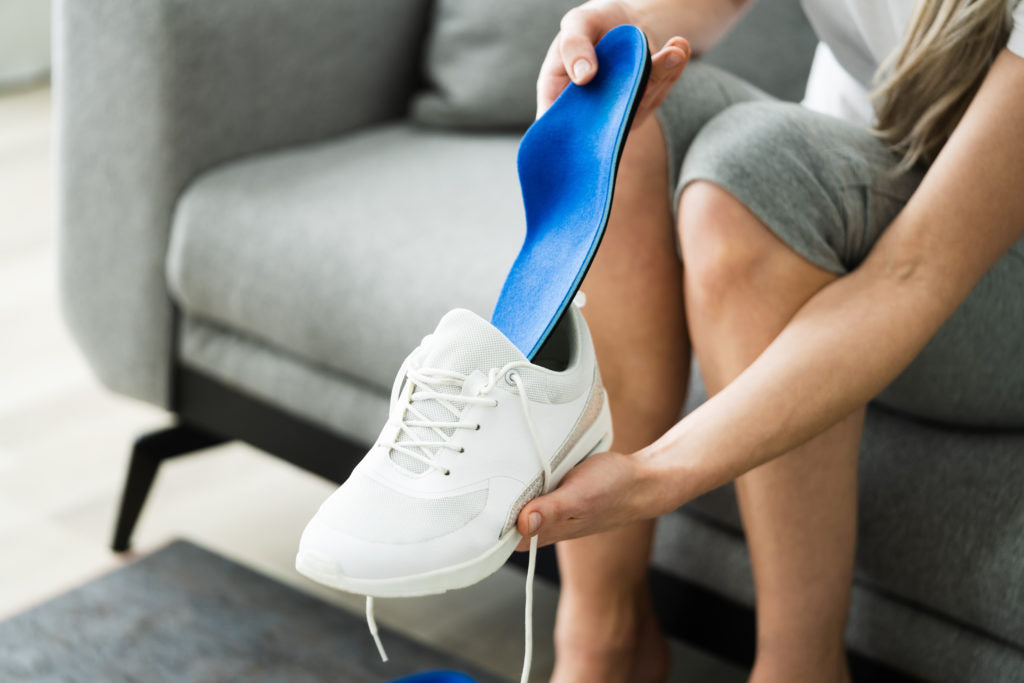
Heel spurs are growths of bone that appear on the bottom of your heels.
Visible via X-ray and protruding as much as half an inch, heel spurs themselves aren’t often very painful, but they can cause heel pain and can be present with other conditions such as plantar fasciitis, and Achilles Tendinitis.
The cause of heel spurs can be a muscle or ligament strain (or both) in your foot. Connecting your heel and ball of your foot is a long band of tissue, and when it gets stretched too much, heel spurs can result. In addition, heel spurs can appear when the membrane that covers your heel bone is worn away by shoes that don’t fit correctly, excessive weight or an imbalance in the way you move.

HOW TO RELIEVE AND HELP PREVENT HEEL SPURS?
Even if you have pain, you may not even know you have heel spurs until an X-ray reveals them, so it’s important to talk to a doctor about your symptoms for a proper diagnosis. In order to provide you with heel spur relief, your doctor may recommend a course of treatment or develop a heel spur pain management plan that may include:
• Stretching exercises
• Taping or strapping to rest stressed muscles and tendons
• Physical therapy
In addition, you may want to talk to your doctor about shoe inserts or orthotic devices from Dr. Scholl’s®
†SOURCE: Bernstein, L., MD (Ed.). (2015, May 22). Heel Spur Causes, Symptoms, Treatments, and Surgery. Retrieved January 24, 2017,
from http://www.webmd.com/pain-management/heel-spurs-pain-causes-symptoms-treatments#1
†SOURCE: Heel Pain | Foot Health | Learn About Feet | APMA. (n.d.). Retrieved January 24, 2017,
from http://www.apma.org/Learn/FootHealth.cfm?ItemNumber=985
How do you get heel spurs?
Heel spurs can occur over time from a combination of repeated strain on the muscles and ligaments in the foot, continual stress to the connective tissue along the bottom of the foot, and tearing of the membrane covering the bone of the heel. Athletes are particularly susceptible to heel spurs, especially those who often engage in running and jumping exercises. Over time, calcium deposits can form under the bone of the heel, producing heel spurs.
How to treat heel spurs
There are a number of ways to treat bone spurs in the heel. If you’re experiencing heel pain that persists or is severe, see your doctor for an evaluation and recommendations on what to do for heel spurs.
Heel spur treatment most often begins with conservative solutions including:
• Insoles or orthotics to help absorb shock, improve alignment and reduce pressure on the heels.
• Stretching to help alleviate discomfort, especially before standing first thing in the morning and after sitting for extended periods.
• Physical therapy that combines stretching and strengthening exercises to improve mobility while easing pain.
• Night splints to help minimize pain from standing immediately after getting out of bed in the morning.
• Ice to reduce pain and inflammation. A covered ice pack can be placed under the heel for up to 20 minutes several times a day.
• Over-the-counter NSAIDs (non-steroidal anti-inflammatory drugs) to target inflammation and pain.
If your heel spurs don’t respond to conservative remedies, your doctor may recommend more aggressive treatment options to heal a heel spur including:
• Prescription medications – A doctor can prescribe stronger pain killers and anti-inflammatory medications if the pain from heel spurs doesn’t respond to over-the-counter medication.
• Cortisone shots – Cortisone can be injected directly into the heel in order to alleviate the inflammation that causes pain.
• Surgery – In rare instances surgery may be recommended in order to remove heel spurs.
What does a heel spur feel like?
Heel spurs only cause pain in some cases. When there are symptoms, they tend to be similar to the pain associated with general heel pain or bruising of the bottom of the heel. People often describe a sharp pain like a knife stab or pin prick in the heel.
Do heel spurs go away?
Heel spurs do not go away on their own. There’s no easy way to fix heel spurs. However, it’s often possible to manage symptoms with a combination of therapies including icing, stretching, orthotics, night splits and pain relievers. For heel spurs that don’t improve using these therapies, a doctor may recommend surgery in order to remove the heel spurs. However, surgery is usually considered a last resort when more conservative solutions aren’t effective.
What does a heel spur look like?
Occasionally heel spurs may create a bump under the skin. However, heel spurs aren’t usually visible externally. They can only really be seen on an X-ray where they appear as smooth, bony projections.
How do you know if you have a heel spur?
If you suspect you have a heel spur, see your doctor for a proper diagnosis. Heel spurs are usually diagnosed with an X-ray.
How to relieve heel spur pain
It’s often possible to relieve heel spur pain with regular icing and over-the-counter pain relievers. Orthotics can also be helpful for reducing pressure and discomfort. A doctor may recommend physical therapy for pain-reducing stretching and strengthening exercises to help heel spurs. When the pain from heel spurs doesn’t improve using these methods, a doctor may prescribe stronger pain relievers or anti-inflammatory medications or injections. In rare instances, surgery may be recommended to remove heel spurs.
Additional Resources
• https://www.webmd.com/pain-management/heel-spurs-pain-causes-symptoms-treatments
• https://my.clevelandclinic.org/health/diseases/10395-bone-spurs-osteophytes
• https://www.medicalnewstoday.com/articles/can-you-get-rid-of-heel-spurs#treatment
• https://orthoinfo.aaos.org/en/diseases–conditions/plantar-fasciitis-and-bone-spurs
• https://www.mayoclinic.org/diseases-conditions/plantar-fasciitis/symptoms-causes/syc-20354846
• https://www.medicalnewstoday.com/articles/320411
• https://www.uofmhealth.org/health-library/tp23002spec
• https://www.healthline.com/health/heel-spurs#diagnosis
• https://www.medicalnewstoday.com/articles/320411#causes


